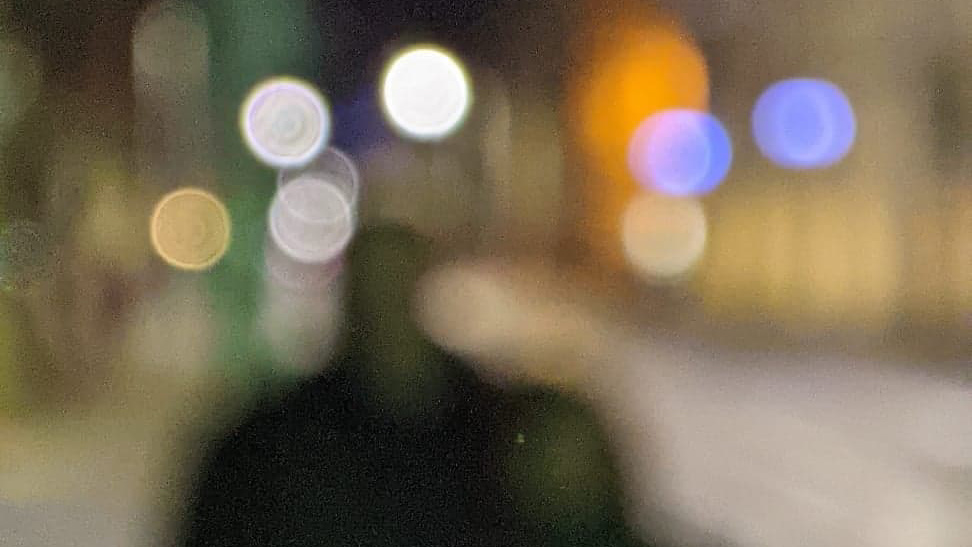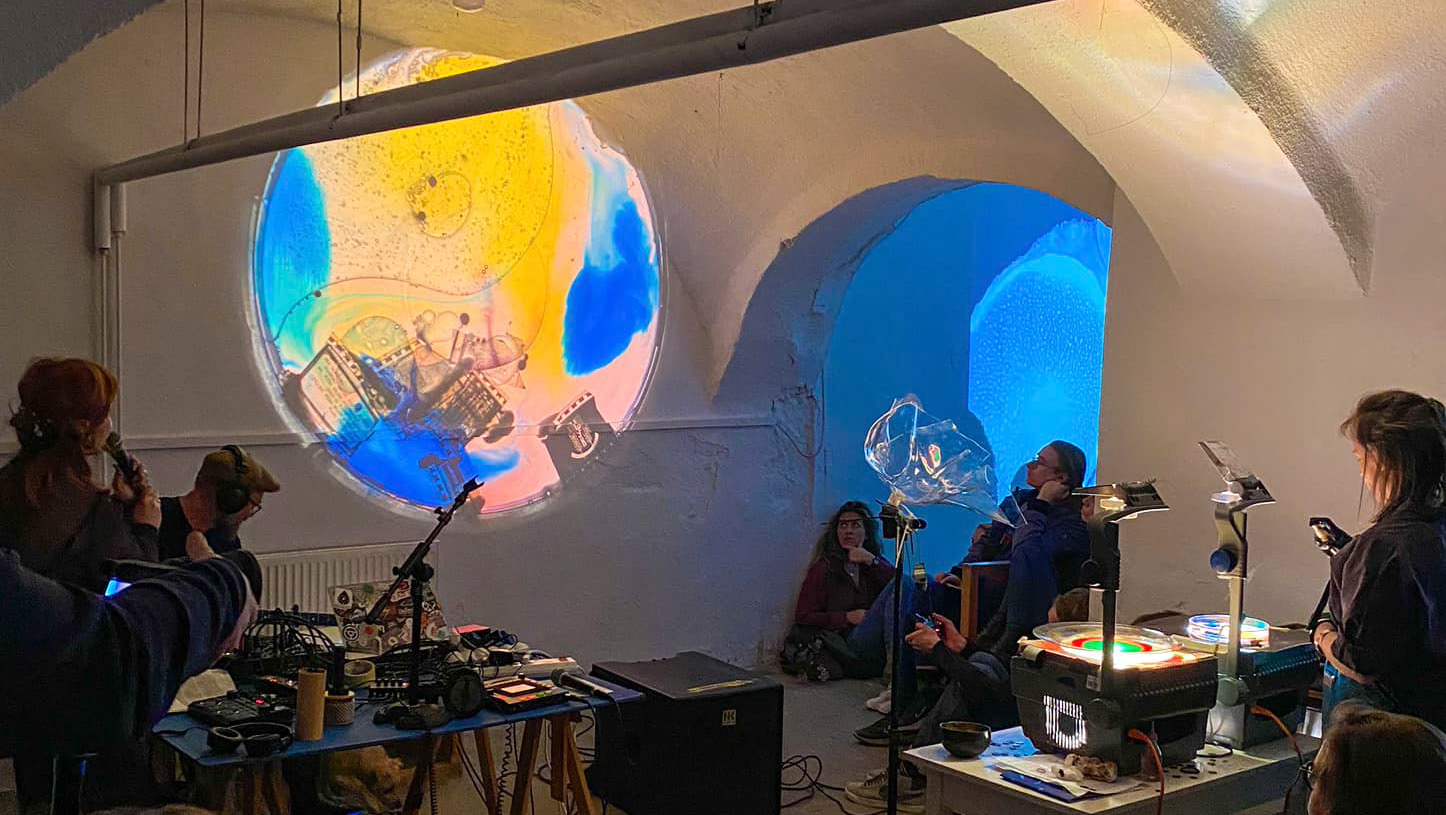




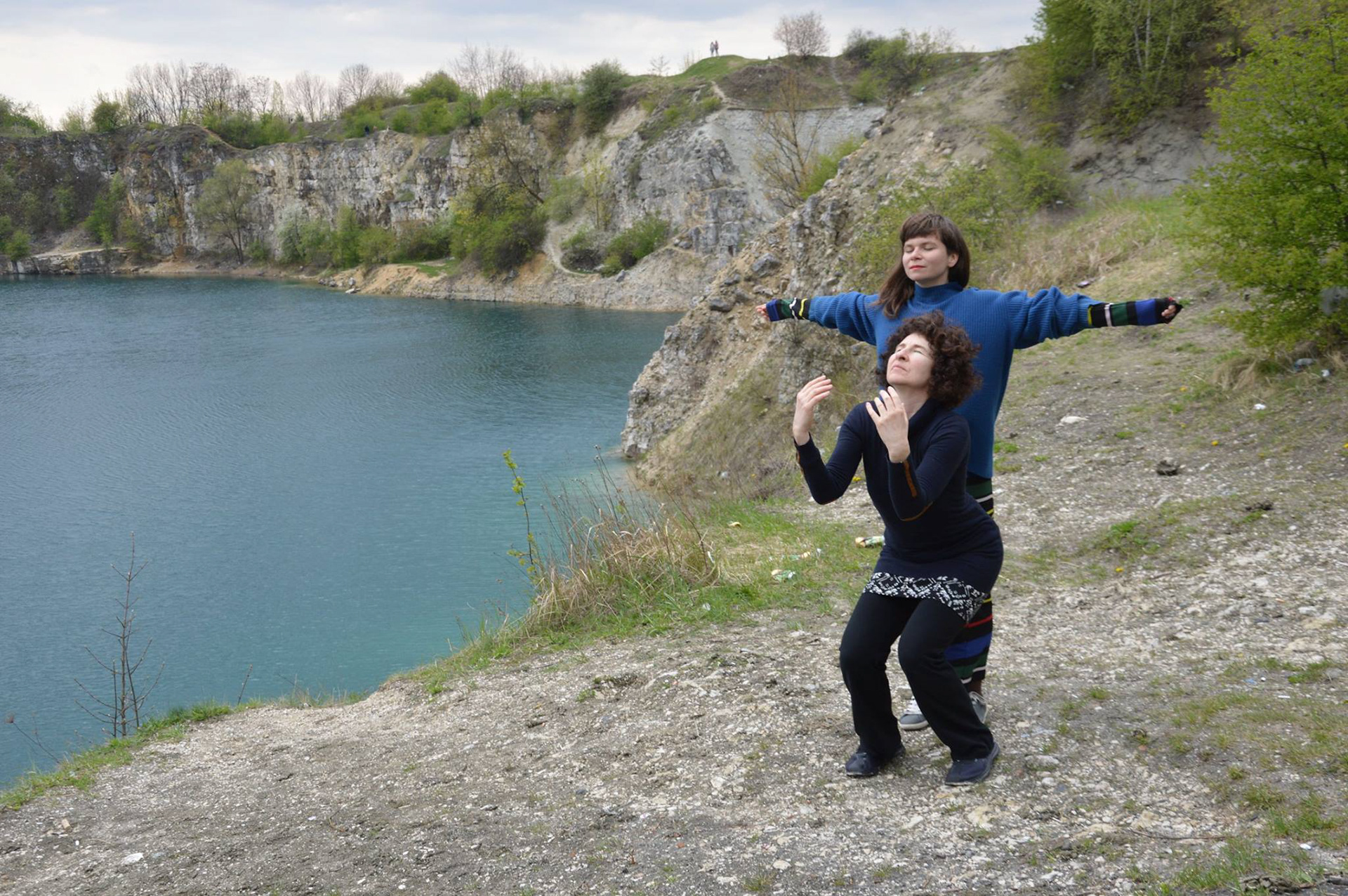
EN:
LOGOMOTION is an improvisational dance/narrative form wherein movement and words spring spontaneously from a common source. Simone Forti quotes: "It `s been a way for me to know what`s on my mind. What`s on my mind before I think it through, while it`s still a wild feeling in my bones."
Nóra Hajós met Simone Forti in the late 80`s and was asked to work with her.
She studied and toured duet performances with her,in USA and Europe.
I am learning, practicing and performing logomotion with Nora Hajos from 2014.
Nóra Hajós met Simone Forti in the late 80`s and was asked to work with her.
She studied and toured duet performances with her,in USA and Europe.
I am learning, practicing and performing logomotion with Nora Hajos from 2014.
American dancer and choreographer Simone Forti (born 1935 in Florence, Italy) has been a leading figure in the development of contemporary performance over more than fifty years. Artist, choreographer, dancer, writer, Forti has dedicated herself to the research of a kinesthetic awareness, always engaging with experimentation and improvisation.
Investigating the relationship between object and body, through animal studies, news animations and land portraits, she reconfigured the concept of performance and dance.
Forti emigrated from Italy with her family via Switzerland to Los Angeles in 1938, where she subsequently studied for four years with choreographer Anna Halprin and has since spent most of her life.She joined the experimental downtown art scene in New York during the emergence of performance art, process-based work and Minimal Art and spent a fruitful time in Rome in the late 1960s, where she used the spaces of L'Attico to study and perform.
Her work is seen as a precursor of the famous Judson Dance Theater —a group of artists experimenting with dance, including Trisha Brown, Steve Paxton, and Yvonne Rainer— and Minimal Art, although she prefers to be referred simply as a "movement artist". Forti has worked with artists like Dan Graham, Robert Whitman, Allan Kaprow and Claes Oldenburg and composers like Charlemagne Palestine, Peter Van Riper, and La Monte Young.
Investigating the relationship between object and body, through animal studies, news animations and land portraits, she reconfigured the concept of performance and dance.
Forti emigrated from Italy with her family via Switzerland to Los Angeles in 1938, where she subsequently studied for four years with choreographer Anna Halprin and has since spent most of her life.She joined the experimental downtown art scene in New York during the emergence of performance art, process-based work and Minimal Art and spent a fruitful time in Rome in the late 1960s, where she used the spaces of L'Attico to study and perform.
Her work is seen as a precursor of the famous Judson Dance Theater —a group of artists experimenting with dance, including Trisha Brown, Steve Paxton, and Yvonne Rainer— and Minimal Art, although she prefers to be referred simply as a "movement artist". Forti has worked with artists like Dan Graham, Robert Whitman, Allan Kaprow and Claes Oldenburg and composers like Charlemagne Palestine, Peter Van Riper, and La Monte Young.
PL:
Simone Forti: „ Logomotion to sposób odkrywania, co kryje się w mojej głowie, zanim o tym pomyślę, podczas gdy jest ciągle dzikim uczuciem w moich kościach”. To technika tańca / narracji, ruszania się i mówienia w tym samym momencie, improwizowanie historii, które mieszkają w naszych ciałach. Bardzo ważną częścią logomotion są uważne spacery oraz technika automatycznego pisania oraz rysowania.
Nóra Hajós pod koniec lat osiemdziesiątych została zaproszona przez Forti do współpracy i od ponad dwudziestu lat zajmuje się uczeniem logomotion, które obydwie artystki używają zarówno jako praktyki, jak i formy performensu. Ja praktykuję i performuję logomotion z Norą Hajos od 2014, od momentu kiedy spotkałyśmy się w Andaluzji w ramach projektu Nature Embodied.
Nóra Hajós pod koniec lat osiemdziesiątych została zaproszona przez Forti do współpracy i od ponad dwudziestu lat zajmuje się uczeniem logomotion, które obydwie artystki używają zarówno jako praktyki, jak i formy performensu. Ja praktykuję i performuję logomotion z Norą Hajos od 2014, od momentu kiedy spotkałyśmy się w Andaluzji w ramach projektu Nature Embodied.
Amerykańska tancerka i choreografka Simone Forti (ur. 1935 we Florencji we Włoszech) od ponad pięćdziesięciu lat jest czołową postacią w rozwoju współczesnego performansu. Artystka wizualna, choreografka, tancerka, pisarka. Forti poświęciła się badaniu świadomości kinestetycznej, zawsze angażując się w eksperymentowanie i improwizację.
Badając relację między przedmiotem, a ciałem, poprzez studiowanie zachowań zwierząt, na nowo skonfigurowała koncepcję performansu i tańca.
Forti wyemigrowała z rodziną z Włoch przez Szwajcarię do Los Angeles w 1938 roku, gdzie następnie przez cztery lata studiowała pod okiem choreografki Anny Halprin, gdzie była częścią społeczności, która zaczynała odkrywać taniec na nowo. Dołączyła do eksperymentalnej sceny artystycznej w centrum Nowego Jorku, wraz z pojawieniem się sztuki performens, a pod koniec lat 60. spędziła owocny czas w Rzymie, gdzie wykorzystywała przestrzenie L'Attico do pogłębiania swojego researchu.
Prekursorka słynnego Judson Dance Theatre – grupy artystów eksperymentujących z tańcem, w tym Trishy Brown, Steve'a Paxtona i Yvonne Rainer – oraz Minimal Art, choć woli, żeby nazywano ją po prostu „artystką ruchu” . Forti współpracował z takimi artystami jak Dan Graham, Robert Whitman, Allan Kaprow i Claes Oldenburg oraz kompozytorami takimi jak Charlemagne Palestine, Peter Van Riper i La Monte Young.
Badając relację między przedmiotem, a ciałem, poprzez studiowanie zachowań zwierząt, na nowo skonfigurowała koncepcję performansu i tańca.
Forti wyemigrowała z rodziną z Włoch przez Szwajcarię do Los Angeles w 1938 roku, gdzie następnie przez cztery lata studiowała pod okiem choreografki Anny Halprin, gdzie była częścią społeczności, która zaczynała odkrywać taniec na nowo. Dołączyła do eksperymentalnej sceny artystycznej w centrum Nowego Jorku, wraz z pojawieniem się sztuki performens, a pod koniec lat 60. spędziła owocny czas w Rzymie, gdzie wykorzystywała przestrzenie L'Attico do pogłębiania swojego researchu.
Prekursorka słynnego Judson Dance Theatre – grupy artystów eksperymentujących z tańcem, w tym Trishy Brown, Steve'a Paxtona i Yvonne Rainer – oraz Minimal Art, choć woli, żeby nazywano ją po prostu „artystką ruchu” . Forti współpracował z takimi artystami jak Dan Graham, Robert Whitman, Allan Kaprow i Claes Oldenburg oraz kompozytorami takimi jak Charlemagne Palestine, Peter Van Riper i La Monte Young.
Śomi & Nora Hajos, Kraków 2017
photos: Ela Suchecka


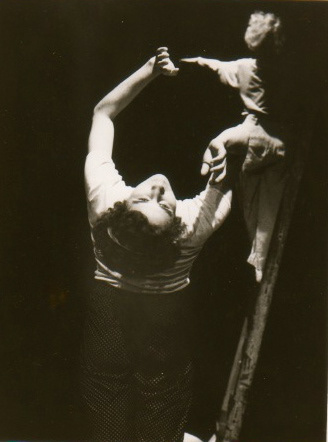

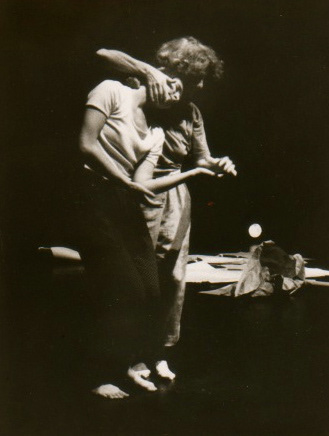
Nora Hajos with Simone Forti.




Śomi performing with Nora Hajos at Kraków Art House using Logomotion and Tuning Scores. May 2018
photos: Dara Bramson
Śomi and Nora, Andalucia 2014
Łapacz S(n)ów
zdjęcia autorstwa: Aleksandra Hordzieja
Łapacz S(n)ów
15 grudnia 2023 Śomi wraz z Norą Hajos połączyły czterogodzinnym spacerem trzy punkty na mapie Krakowa, jakimi są kamienice z Sowami, tym samym otworzyły dla Krakowa portal śnienia, Łapacz s(n)ów. Śomi wpadła na pomysł Łapacza, wpatrując się godzinami w obraz surrealistki Remedios Varo "Stworzenie Ptaków", na którym Kobieta - Sowa trzyma trójkątny pryzmat, przez który za pomocą światła z gwiazd stwarza ptaki. Artystki podczas spaceru używały metody Logomotion, Śomi z powodu tego projektu po raz pierwszy połączyła tę metodę z Surrealizmem, który Andre Breton definiuje jako: "czysty automatyzm psychiczny, który ma służyć do wyrażania bądź w słowie, bądź w piśmie, bądź innym sposobem, rzeczywistego funkcjonowania myśli. Dyktowane myśli wolne od wszelkiej kontroli umysłu, poza wszelkimi względami estetycznymi czy moralnymi”


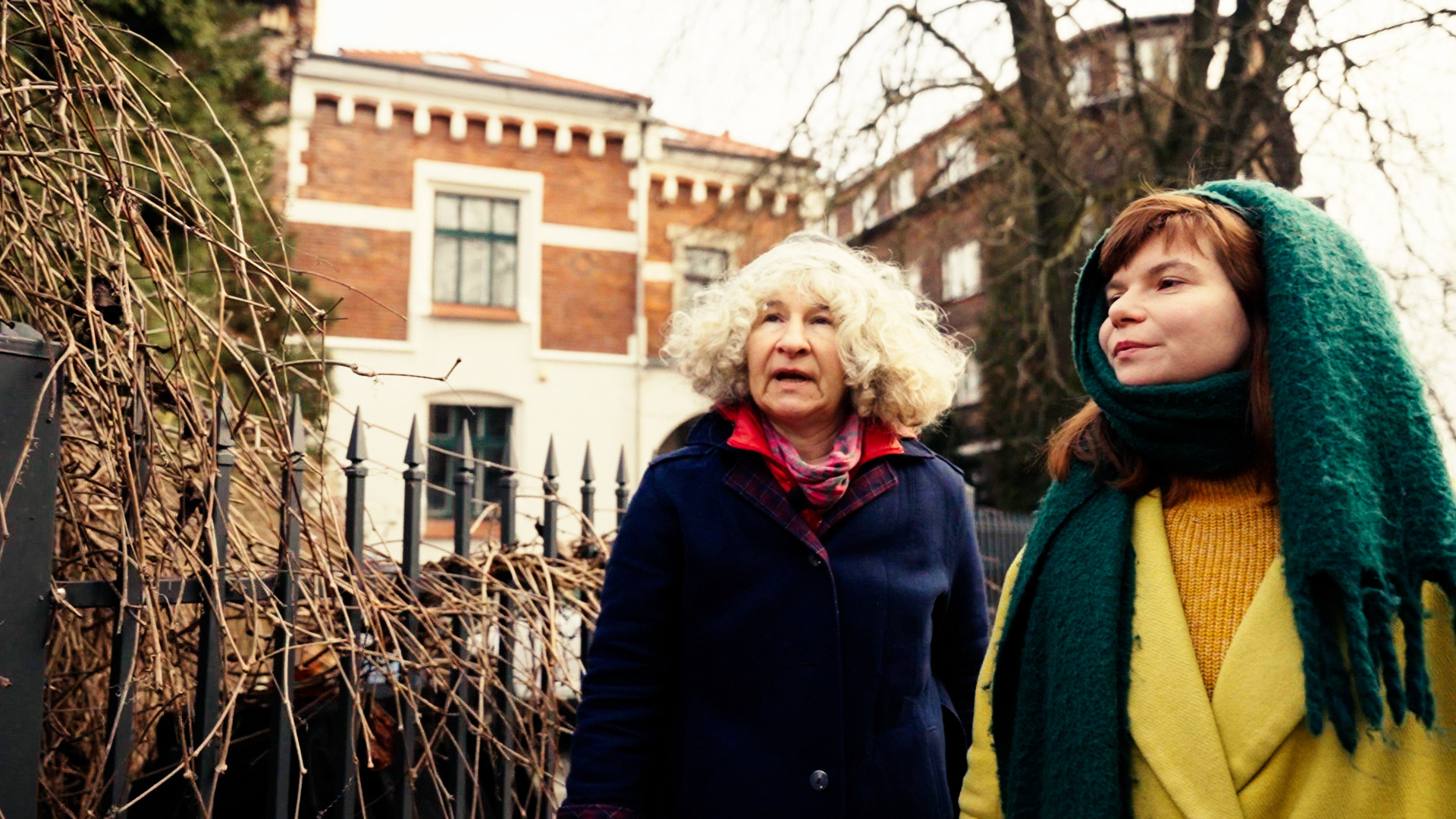


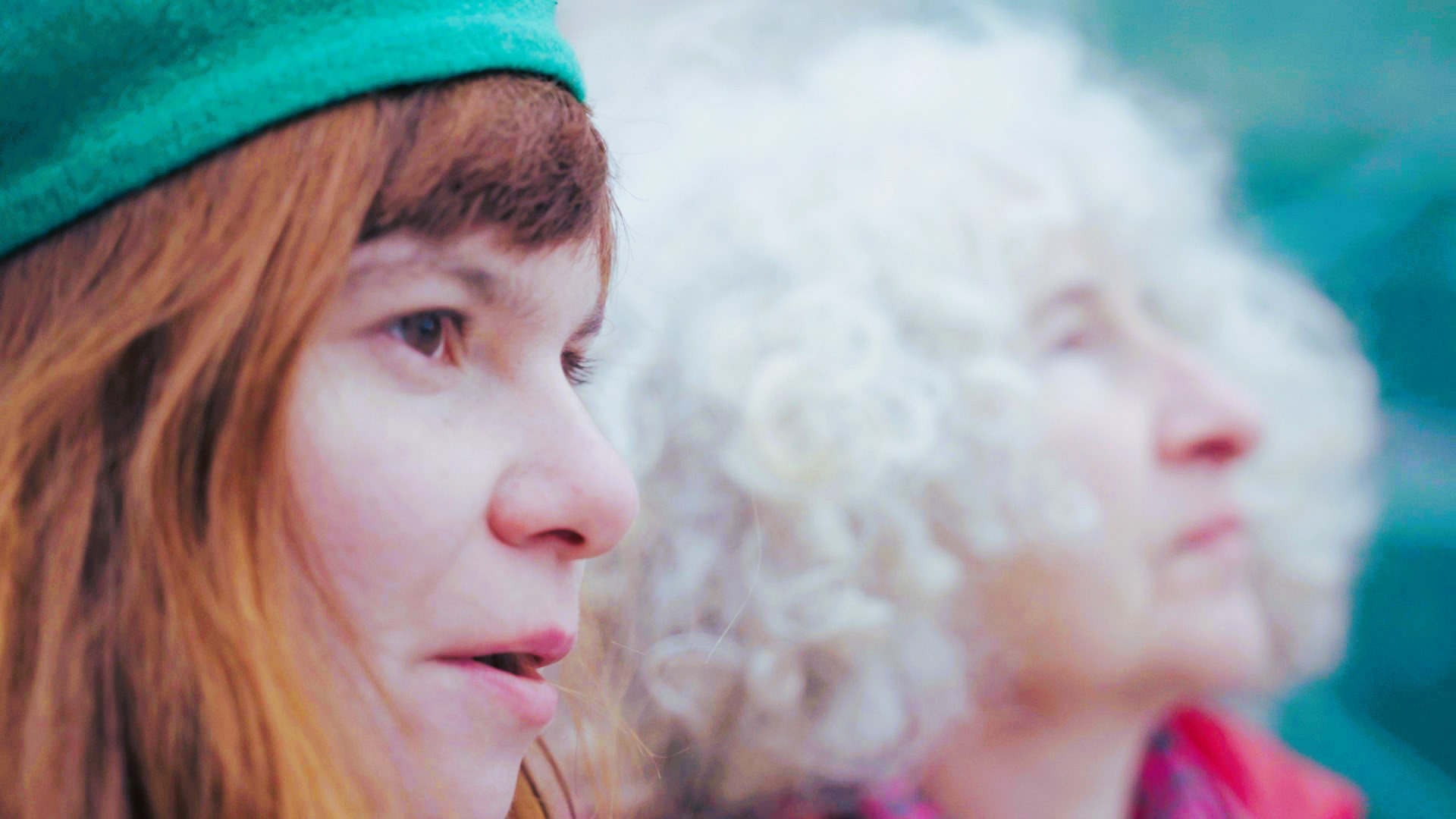

Fascynacja Andre Bretona automatyzmem psychicznym rozpoczyna się podczas wojny, kiedy to jako zainteresowany chorobami psychicznymi młody student medycyny eksploruje freudowskie metody, wydobywając od będących w szoku pacjentów wolne od samokrytyki ciche monologi. W obrębie jego zainteresowań znajduje się w tym czasie również psycholog Pierre Janet i jego książka „Psychological Automatism”, a wszystko to prowadzi do powstania powieści Pola Magnetyczne, napisanej przez niego i Philippe’a Soupoulta, za pomocą metody automatycznego pisania, publikację tę można nazwać pierwszą odsłoną surrealizmu. [1] Jednak automatyzm psychiczny zaślubiony przez Surrealizm, pojawił się w sztuce już wcześniej pod postacią mediumistycznych rysunków i tekstów tworzonych podczas seansów spirytystycznych przez grupę Pięciu (De Fem)[2]. Do grupy należała Hilma af Klint, której solowa wystawa w muzeum Solomona R. Guggenheim’a w Nowym York w 2018 roku sprawiła, że malarka została uznana za prekursorkę sztuki abstrakcyjnej (przed Kadinskym i Modrianem!), co zmieniło bieg historii sztuki. Z pewnością, to, co łączyło Hilmę i Surrealistów to wielkie pragnienie uchwycenia tego, co ukryte, dotykanie niewidzialnego, a automatyzm psychiczny okazał się we wszystkich przypadkach najlepszym do tego narzędziem.
Czytając manifest Bretona i mantrując w głowie jego definicję zrozumiałam, że metoda tańca –narracji Logomotion, którą praktykuję od 2014 roku to nic innego jak właśnie przykład czystego automatyzmu psychicznego. Metoda polega na ruszaniu się i mówieniu w tym samym momencie, wypowiadaniu tego co jeszcze nie przemyślane w naszych kościach. Logomotion jest interesującym wyłomem w definicji Bretona, tym „innym sposobem”, nie realizowanym poprzez pisanie, ani rysowanie, ale poprzez ciało i pozbierane w nim historie.







